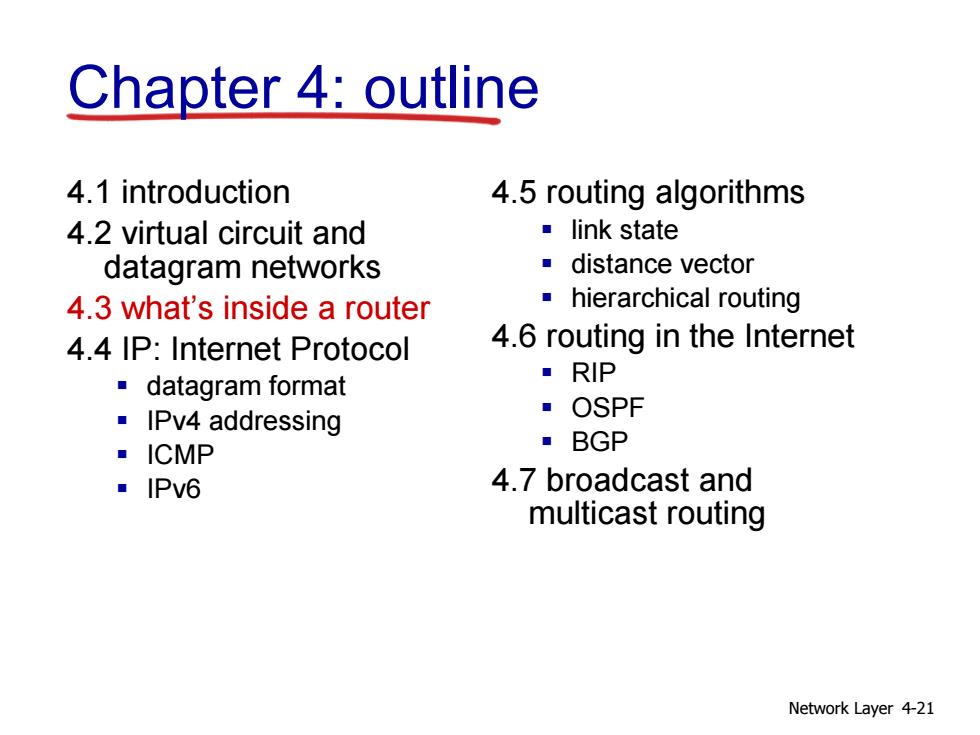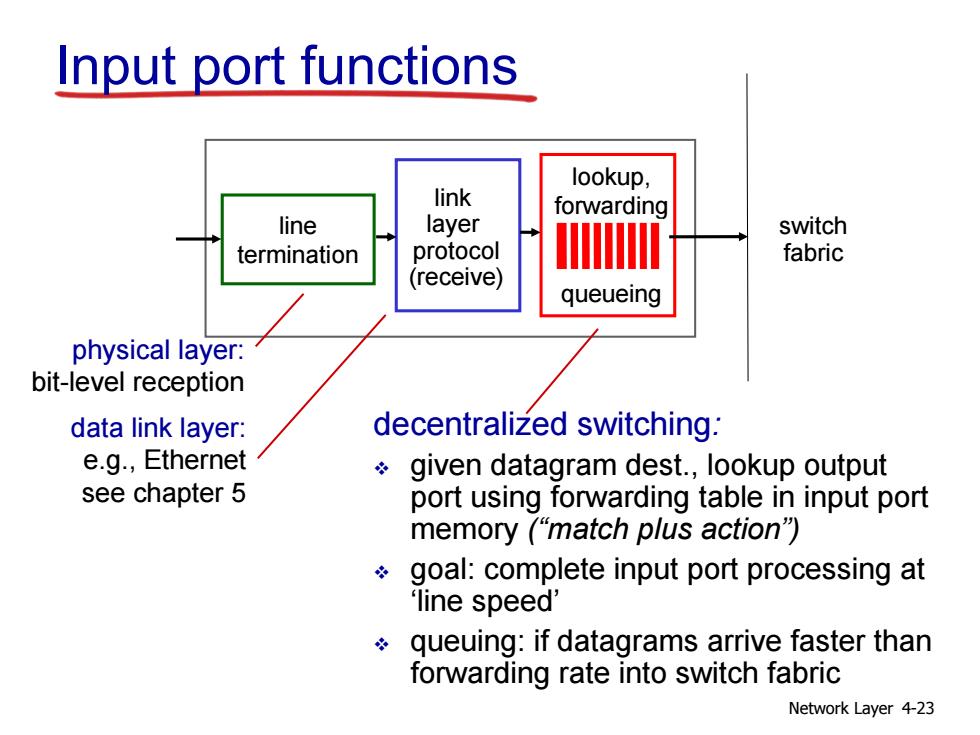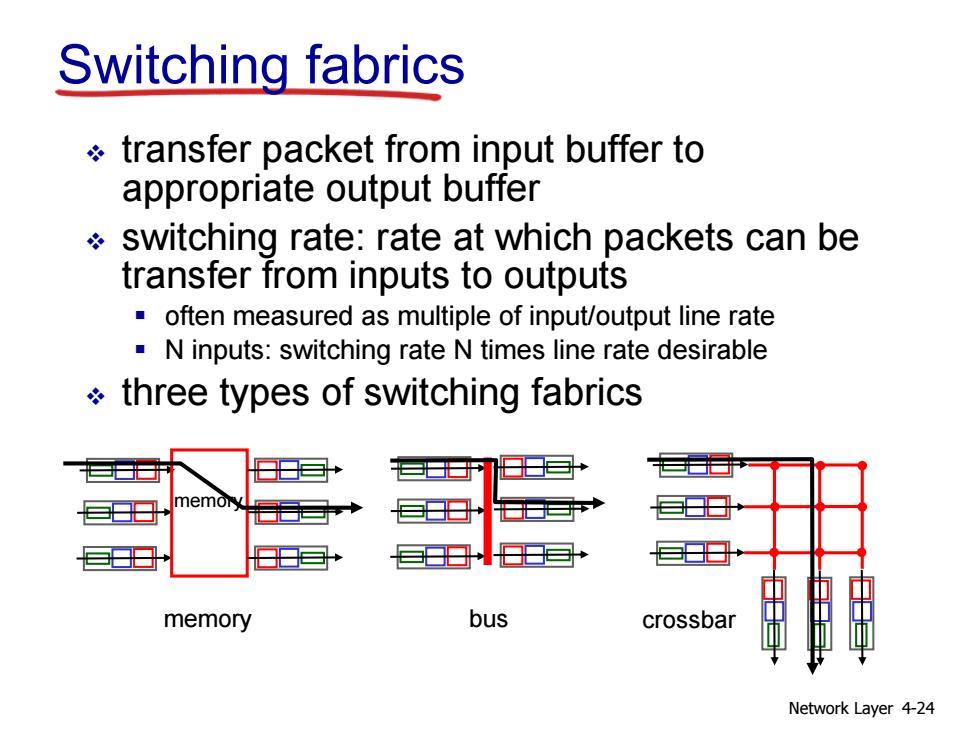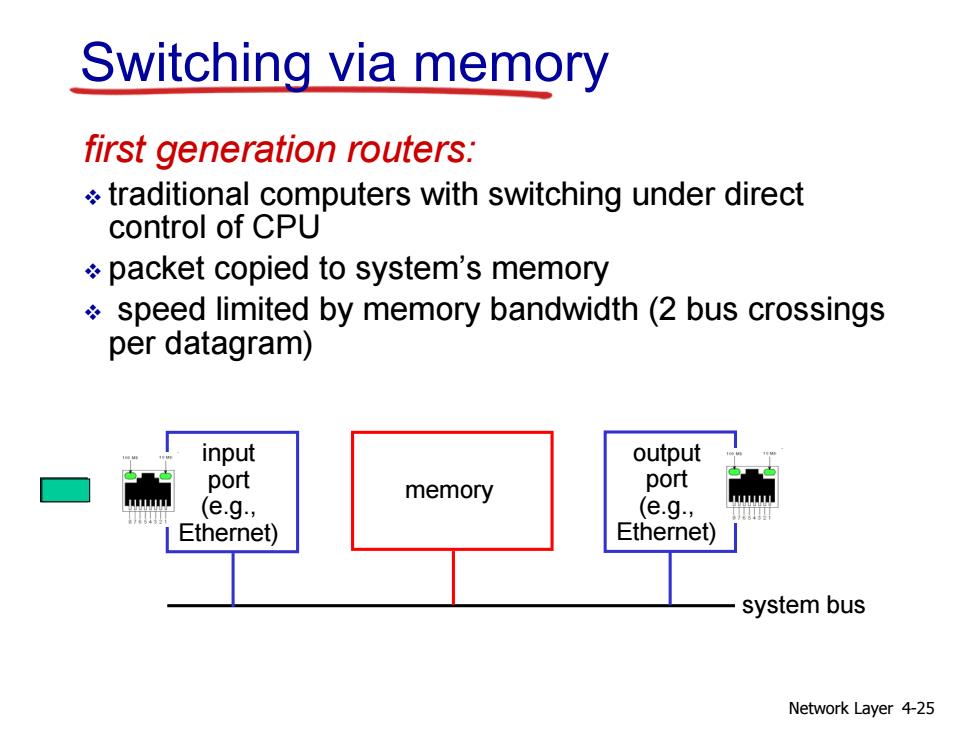
Chapter 4:outline 4.1 introduction 4.5 routing algorithms 4.2 virtual circuit and link state datagram networks distance vector 4.3 what's inside a router hierarchical routing 4.4 IP:Internet Protocol 4.6 routing in the Internet RIP datagram format ■lPv4 addressing OSPF ■ICMP ·BGP ■IPv6 4.7 broadcast and multicast routing Network Layer 4-21
Network Layer 4-21 4.1 introduction 4.2 virtual circuit and datagram networks 4.3 what’s inside a router 4.4 IP: Internet Protocol datagram format IPv4 addressing ICMP IPv6 4.5 routing algorithms link state distance vector hierarchical routing 4.6 routing in the Internet RIP OSPF BGP 4.7 broadcast and multicast routing Chapter 4: outline

Router architecture overview two key router functions: run routing algorithms/protocol(RIP,OSPF,BGP) forwarding datagrams from incoming to outgoing link forwarding tables computed, routing pushed to input ports processor routing,management control plane (software) forwarding data plane (hardware) high-seed switching ● 】 fabric ● router input ports router output ports Network Layer 4-22
Network Layer 4-22 Router architecture overview two key router functions: run routing algorithms/protocol (RIP, OSPF, BGP) forwarding datagrams from incoming to outgoing link high-seed switching fabric routing processor router input ports router output ports forwarding data plane (hardware) routing, management control plane (software) forwarding tables computed, pushed to input ports

Input port functions lookup, link forwarding line layer switch termination protocol fabric (receive) queueing physical layer: bit-level reception data link layer: decentralized switching: e.g.,Ethernet given datagram dest.,lookup output see chapter 5 port using forwarding table in input port memory ("match plus action") goal:complete input port processing at 'line speed' queuing:if datagrams arrive faster than forwarding rate into switch fabric Network Layer 4-23
Network Layer 4-23 line termination link layer protocol (receive) lookup, forwarding queueing Input port functions decentralized switching: given datagram dest., lookup output port using forwarding table in input port memory (“match plus action”) goal: complete input port processing at ‘line speed’ queuing: if datagrams arrive faster than forwarding rate into switch fabric physical layer: bit-level reception data link layer: e.g., Ethernet see chapter 5 switch fabric

Switching fabrics transfer packet from input buffer to appropriate output buffer switching rate:rate at which packets can be transfer from inputs to outputs often measured as multiple of input/output line rate N inputs:switching rate N times line rate desirable three types of switching fabrics 日日 memory 日 日日 B日写 日B日g a日 memory bus crossbar Network Layer 4-24
Network Layer 4-24 Switching fabrics transfer packet from input buffer to appropriate output buffer switching rate: rate at which packets can be transfer from inputs to outputs often measured as multiple of input/output line rate N inputs: switching rate N times line rate desirable three types of switching fabrics memory memory bus crossbar

Switching via memory first generation routers: traditional computers with switching under direct control of CPU packet copied to system's memory speed limited by memory bandwidth(2 bus crossings per datagram) input output port memory port (e.g, (e.g, Ethernet) Ethernet) system bus Network Layer 4-25
Network Layer 4-25 Switching via memory first generation routers: traditional computers with switching under direct control of CPU packet copied to system’s memory speed limited by memory bandwidth (2 bus crossings per datagram) input port (e.g., Ethernet) memory output port (e.g., Ethernet) system bus